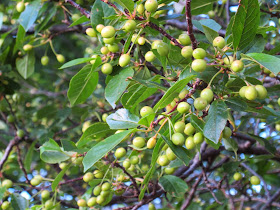I wrote this article last fall for the newsletter of our local homeschool association, and I share it again here for your edification.
I’m Kurt Riggenbach, and I’ve supported my wife, Karen, as she did most of the work in educating our daughters over the past 13 years. Lily finished high school five years ago, and Gretel just finished this spring. They say you can know someone by the things they value, and because homeschooling has changed us so dramatically, I’d like to introduce our family through what I consider to be the four best things about homeschooling.
We set our own schedule. Not only did we decide when to study each day, but we chose which days are “school” days, and when we would take breaks during the year. Our girls both attended the public school for a time (five years for our oldest, and one for our youngest), so we were all familiar with the hassle and anxiety of arriving at the school building in the morning before the bell rang. In contrast, setting our schedule based on the natural morning rhythm of our family was a true blessing that probably added 10 years to my wife’s emotional life. It was a rare day that our school requirements weren’t satisfied by the time the public school let out in the afternoon, even though we usually started later than they did. That wasn’t too surprising, however, since my wife was exposed to the inefficiency of the government system when she served as a room mother in our daughter’s class, and became convinced that even the most incompetent home school could be more efficient than the public school.
We typically scheduled school for Monday through Friday, but we didn’t hesitate for a moment to take vacations when the public school was in session. In fact, we prefer vacationing in the spring and fall now as the weather is more moderate, crowds are smaller at most of the places we visit, and “off peak” discounts sometimes apply. We even occasionally used summer months to catch up on schoolwork or get ahead in a subject area.
Our daughters both took thirteen years to complete their K-12 education, primarily because we didn’t have any goals that required they finish earlier. Now that the State of Illinois is satisfied with their education, they continue to study subjects that interest them, and aren’t afraid of learning in unconventional ways, and on their own schedule.
We choose our own curriculum. I remember well the paper our young daughter brought home from the public school on which she was asked to list a person she wished to meet. Her answer: Monica Lewinsky. I was too embarrassed for her to inquire how she knew that name, or in what context it was presented that would cause a grade-schooler to desire to meet her. I was troubled that at the time she knew few of the names of the current elected leaders of our state or country, but she knew the name of an infamous White House intern. That was probably one of the straws that were quietly piling on the camel’s back of our decision to teach our children at home, and represents the control one relinquishes when their child is part of the public school system. Even though evaluating and choosing books and resources for each child can be daunting, the peace that comes with knowing what they’re learning and what they are not exposed to is immeasurable.
Granted, the State of Illinois requires that we teach certain subjects, but it wasn’t until we began homeschooling that we realized how much latitude one has in satisfying the requirements of the law. The APACHE conference opened our eyes to resources that presented a perspective different from that presented by the public schools my wife and I attended. Books and speakers challenged our paradigms in history, math, science, government, and writing to the extent that I sometimes felt like I couldn’t trust anything I learned in my first 18 years of life! We gladly chose resources that were based on a biblical worldview, and as a result, my children are stronger creationists and better-balanced historians than I am, and that makes me happy.
We’re part of a great culture. Fourteen years ago I would not have guessed that some of our closest friends would be the homeschoolers we met while touring Colonial Williamsburg. We were in the early months of our homeschooling adventure when we realized our friendships with other homeschooling families were the closest friendships we had. Many of those friendships still thrive today, and we continue to add new friends as we travel to attend new conferences, events, or simply sightseeing. More often than not, we recognized common philosophies and values after only a few moments of conversation.
Homeschooling Christians often have so much in common that it’s not difficult to feel like we’ve known each other our entire life when, in reality, we’ve only just met. Shared goals and struggles help bind our homeschool culture together, and they often prove stronger than ethnic, geographic, economic, and even doctrinal differences. Our strongest bond, however, could be that we not only see our method of educating as consistent with scripture, but many of us feel compelled to teach our children at home. It’s not a trivial thing to reject the public school culture of our day, and our common resolution in that effort joins us closer together.
Maybe that’s why it’s not uncommon to find homeschoolers worshipping together in congregations in which they outnumber those that choose other education options. We eventually joined a church composed primarily of homeschoolers several years ago, and we find it a natural fit with many of the convictions God has forced us to face in the last 13 years. In fact, God continues to use His Spirit through many imperfect people in our culture to convict us in areas where we fall short of his will, and we appreciate that aspect of our homeschool culture.
We spend time together. When our oldest daughter was nine years old, the public school consumed all but 2 or 3 of her waking hours each week day. Recognizing then that she might leave our home in as few as nine years, we were startled by the realization that we may never know her very well if we continued at that rate. God opened our eyes then and allowed us to deepen our relationships with our children through something as simple as spending more time with them. My wife benefitted more than I since she did almost all the instruction while I spent a good part of my day working away from home, but our family slowly began acting more like a family and less like individuals living together.
We still have individual interests, individual friends, and times when we do activities individually, but our identity as a family is now as strong as our identity as individuals. Time will tell if we put too much emphasis on being together instead of building independence, but at the moment, we’re all enjoying our time together.
Few decisions in my life have changed as many aspects of my life as our decision to bring our children home for their education. That decision clearly seemed to be a test of our obedience to what we felt the Lord was commanding us to do, and required a good bit of faith at the time. Even so, it was a relief to obey as the conviction was so strong we knew we would be miserable if we didn’t. God has continued to challenge our beliefs or practices in many areas, frequently using people that we would not have met were we not part of the homeschooling culture. We pray God continues to challenge us for the rest of our lives.


















































